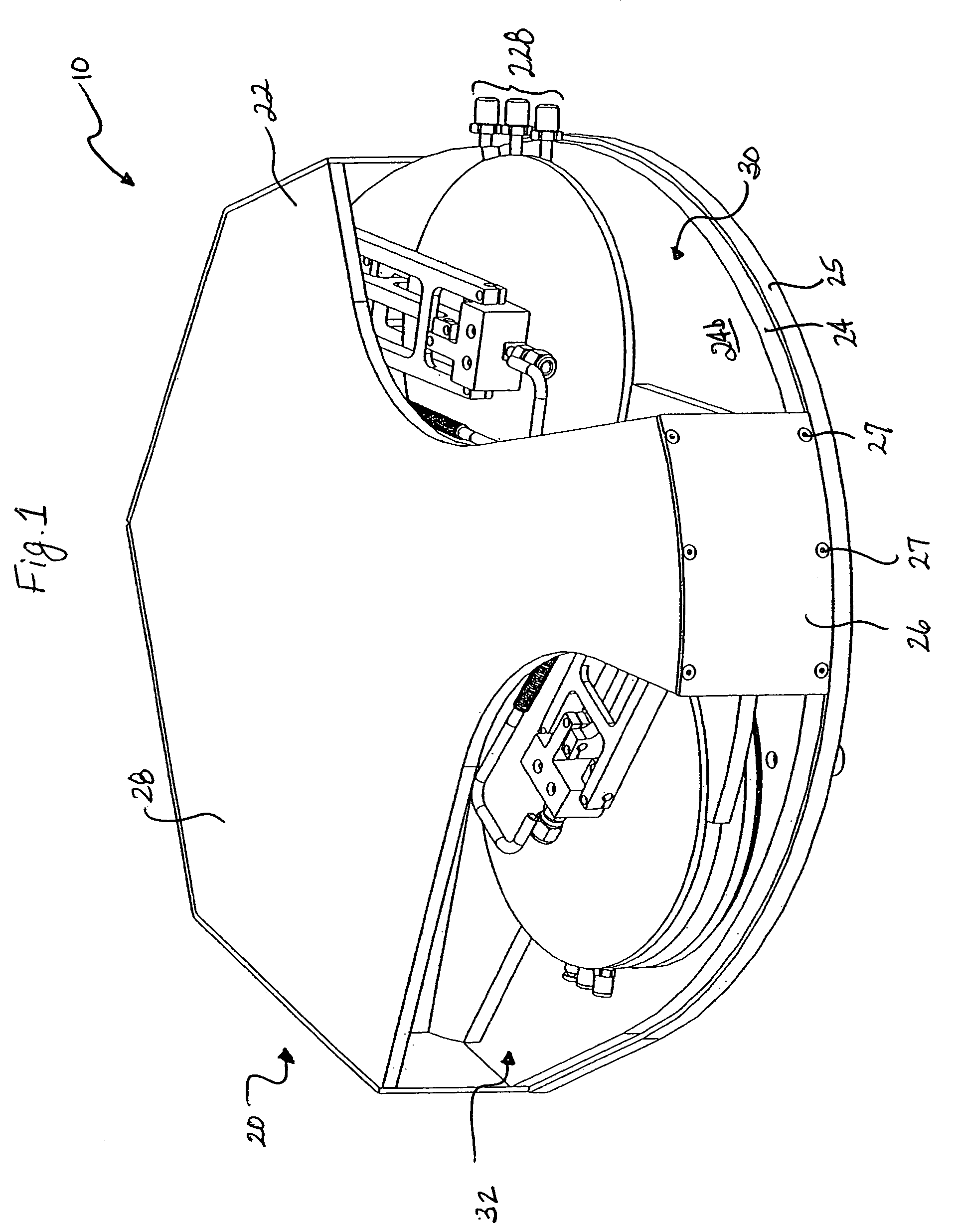Method and apparatus for thermally processing microelectronic workpieces
a technology for microelectronic workpieces and equipment, applied in lighting and heating equipment, furniture, transportation and packaging, etc., can solve the problems of device failure, device failure, and affecting the polish rate of chemical mechanical processing as well as the ultimate uniformity of the surface of the polished copper structure, so as to improve equipment reliability, reduce the throughput time of the thermal process, and increase manufacturing efficiencies
- Summary
- Abstract
- Description
- Claims
- Application Information
AI Technical Summary
Benefits of technology
Problems solved by technology
Method used
Image
Examples
Embodiment Construction
[0046]For purposes of the present application, a microelectronic workpiece is defined to include a workpiece formed from a substrate upon which microelectronic circuits or components, data storage elements or layers, and / or micromechanical elements are formed. Although the present invention is applicable to this wide range of products, the invention will be particularly described in connection with its use in the production of interconnect structures formed during the production of integrated circuits on a semiconductor wafer. Still further, although the invention is applicable for use in connection with a wide range of metal and metal alloys as well as in connection with a wide range of elevated temperature processes, the invention will be particularly described in connection with annealing of electroplated copper and copper alloys.
[0047]The present invention generally relates to an apparatus 10 and method for thermally processing microelectronic workpieces W. Referring to FIGS. 1 ...
PUM
 Login to View More
Login to View More Abstract
Description
Claims
Application Information
 Login to View More
Login to View More - R&D
- Intellectual Property
- Life Sciences
- Materials
- Tech Scout
- Unparalleled Data Quality
- Higher Quality Content
- 60% Fewer Hallucinations
Browse by: Latest US Patents, China's latest patents, Technical Efficacy Thesaurus, Application Domain, Technology Topic, Popular Technical Reports.
© 2025 PatSnap. All rights reserved.Legal|Privacy policy|Modern Slavery Act Transparency Statement|Sitemap|About US| Contact US: help@patsnap.com



